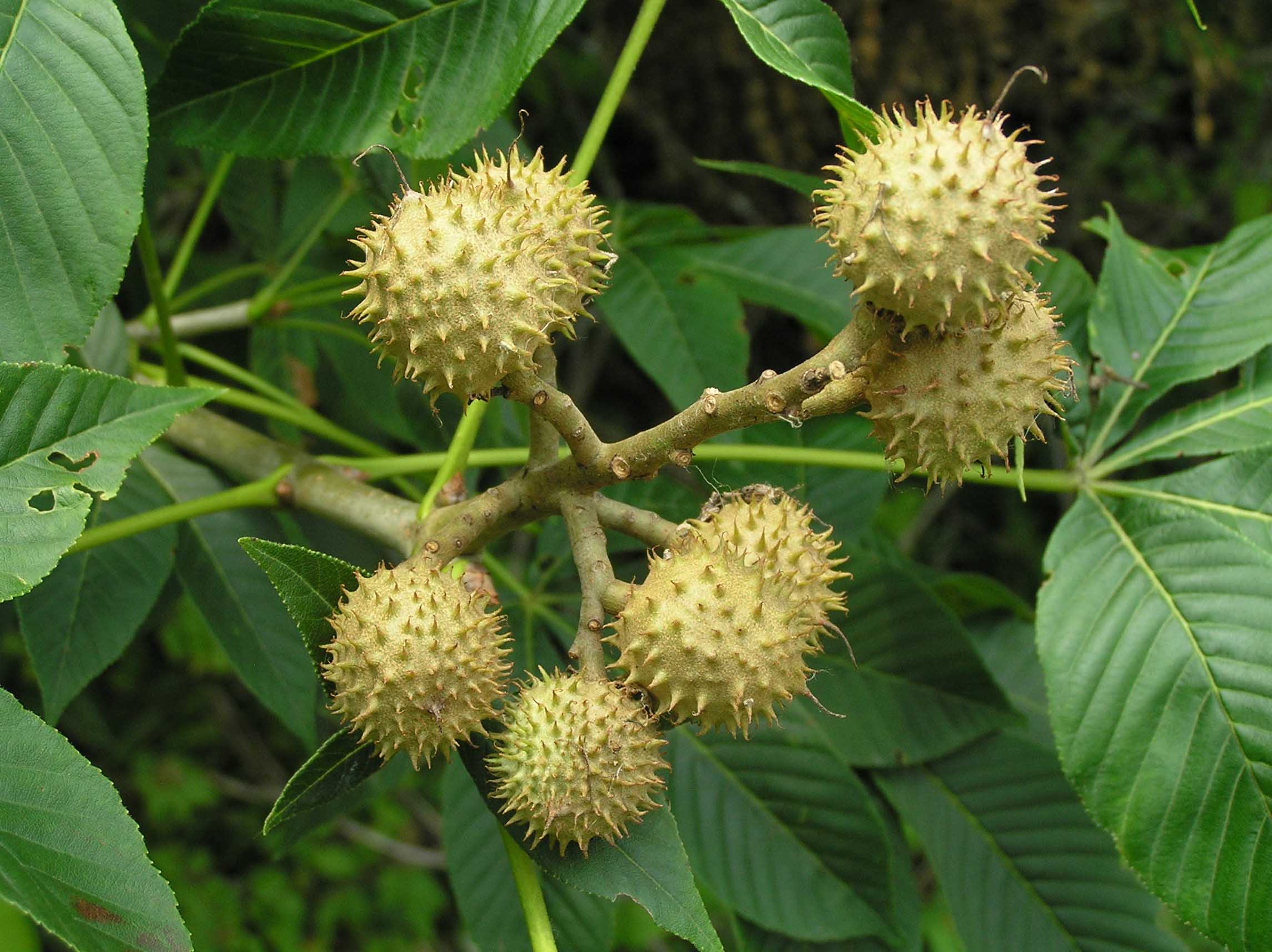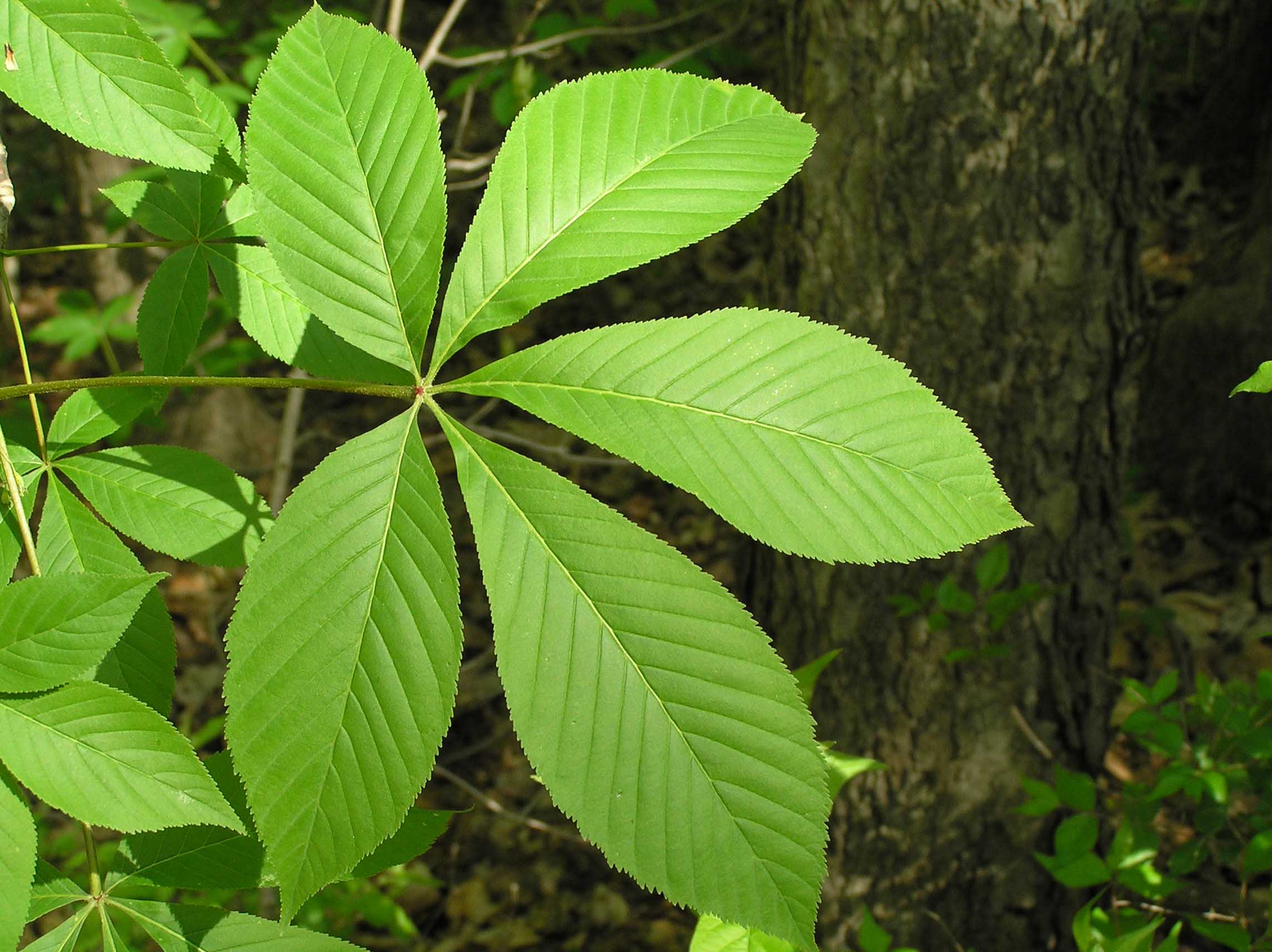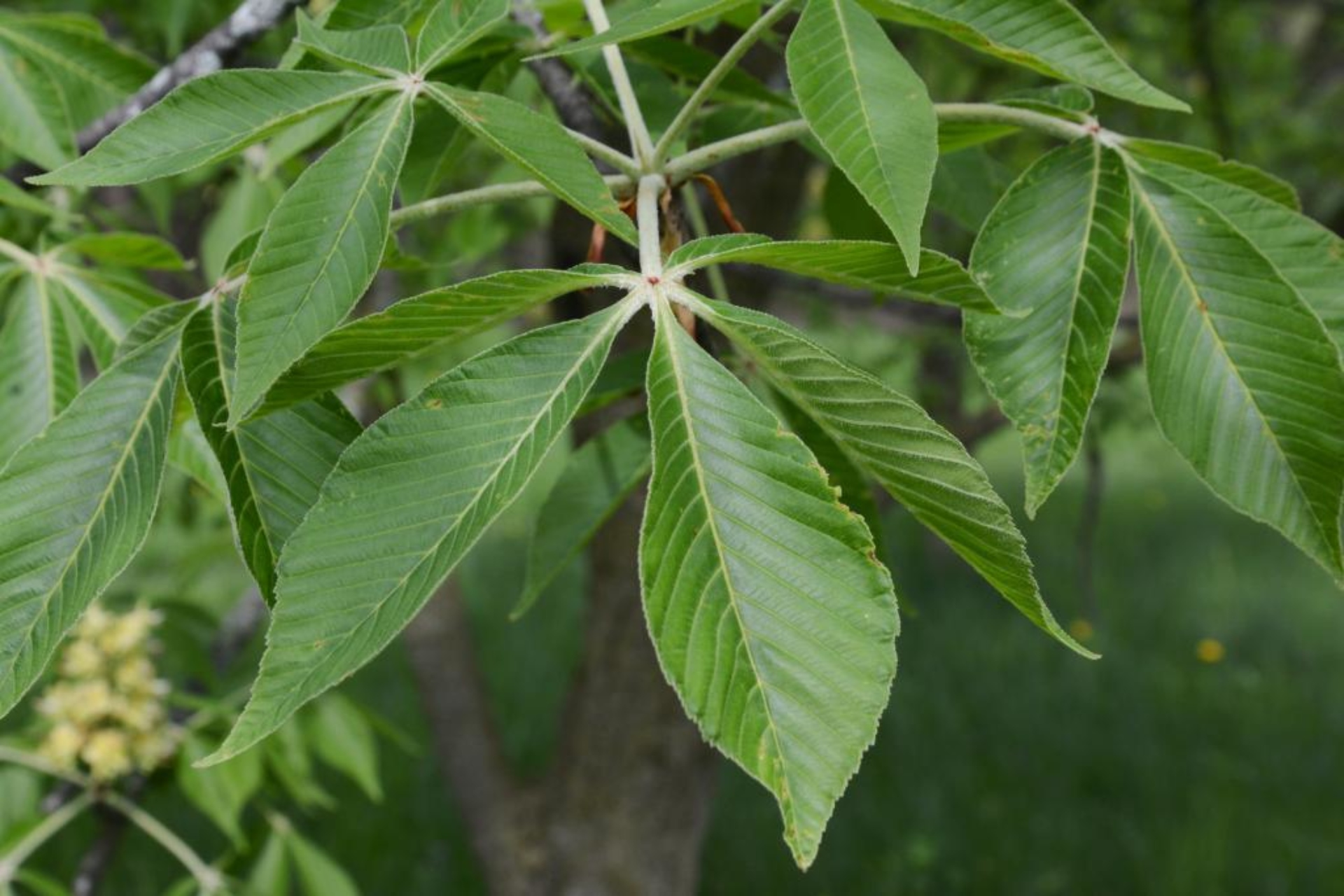ohio buckeye tree scientific name
It is a drought-adaptive tree using. Hippocastanaceae horse chestnuts Description.
The Ohio Buckeye tree Aesculus glabra derives the name from.

. 40 to 50 ft. 20 to 40 ft. The palmately compound leaves feature five to seven leaflets and turn orange to.
The common name Buckeye was derived from the Native Americans who noticed that the glossy chestnut-brown seeds with the lighter circular eye looked very similar to the eye of a buck male deer. Simple leaves have a single leaf blade while. Leaflets 46 inches long 1½2½ inches wide broadest in the middle margin finely.
Shop By Type Color Zone More. The Ohio Buckeye and its related family members include other tree species and shrub forms that work well in many Ohio landscapes. Reliable red fall color and low fruit production.
In Iowa the Ohio buckeye is found scattered in timber in mixture with other species in the southeastern and central parts usually on moist bottomland soils. A cultivar with superior resistance to leaf blotch leaf scorch and powdery mildew. Pyramidal or elliptical when.
An early botanist found it on the banks of the Ohio River and added Ohio to the common name in order to distinguish this species from the related Yellow Buckeye. Ohio Buckeye Aesculus glabra Description. It is a small tree with a short trunk and narrowish crown usually reaching a height of about 50 feet but very old individuals may be taller.
The fruits are poisonous to humans but they are a favorite food of squirrels and other small animals. Most Ohio tree species have alternate arrange-ment. The name Buckeye presumably comes from local usage in the early days of settlement of Ohio.
Nature Hills Is Americas Largest Online Plant Nursery. To remember the few tree species that have opposite arrangement use the mnemonic of MAD BUCK maple ash dogwood and buck-eye. Related to the European horse chestnut the Ohio Buckeye is a rounded deciduous tree with low sweeping branches that arch upwards at the ends and dense foliage.
Buckeye is a variety of ornamental trees in the genus Aesculus and family Sapindaceae. Ohio buckeye Aesculus glabra also known as American buckeye fetid buckeye and stinking buck-eye derives its unflattering common names from the disagreeable odor that emanates when the leaves are crushed. Its natural range is primarily in the Midwestern and lower Great Plains regions of the United States extending southeast into the geological Black Belt of Alabama and Mississippi.
Hippocastanum and large shrubs like the red buckeye A. This slow growing tree rarely reaching heights over 40 feet in Colorado is native from Pennsylvania to Nebraska. The large brown seeds are sometimes called conkers since this tree is related to the European Horsechestnut.
Seeds were collected about 1803 from some unknown locality in Ohio or neighboring state and sent to Berlin for germination. OHIO BUCKEYE - AESCULUS GLABRA. Ohio buckeye stinking buckeye.
50-75 ft 15-23 m tall 1-15 ft 3-5 m trunk diameter. There are four main varieties of buckeye trees. It is a neatly rounded tree with sweeping branches and dense foliage that provides deep shade.
Its form is rounded and its large leaves and low branching provide a dense shade. The buckeye is perhaps the most iconic of the many trees found in Ohio. Buckeye trees are easily recognizable by their large glossy leaves and bright red fruits.
Ohios state tree and the symbol for Ohio State Universitys intercollegiate athletics Ohio buckeye trees Aesculus glabra are the best known of the 13 species of buckeyesOther members of the genus include medium to large trees such as the horse chestnut A. Ohio Buckeye or Fetid Buckeye is native to North America and generally has a short trunk and low branching structure. A Chicagoland Grows introduction.
Hardiness Zones 4 to 7. The most popular buckeye is the species Aesculus glabra or Ohio buckeye tree. One of the first trees to leaf out in the spring and the leaves turn pleasing shades of.
It has upright clusters of yellow-green flowers in spring. 325 lbsft 3 520 kgm 3 Specific Gravity Basic 12 MC44 52. Reportedly native Indians called the fruit of this tree hetuck which has been translated to.
It is also found locally in the extreme southwest of Ontario on Walpole. Aesculus glabra Related to the European horse chestnut the Ohio Buckeye is a rounded deciduous tree with low sweeping branches that arch upwards at the ends and dense foliage. Leaves are opposite palm-shaped compound with usually 7 leaflets.
20 to 40 ft. Aesculus glabra commonly known as Ohio buckeye is a species of tree in the soapberry family Sapindaceae native to North America. 770 lb f 3430 N.
Ohio buckeye Aesculus glabra the state tree of Ohio is found primarily as an understory tree in the western half of Ohio where the soils are more alkaline in pH. The Ohio Buckeye is Aesculus glabra Willdenow. 50 to 70 ft.
Ohio buckeye has large compound leaves with 5-7 pointed leaflets radiating outwards from the end of a central stalk like fingers on a hand. This tree is about 40-60 tall forming a single trunk about 1-2 across and a much-branched ovoid crown. PaviaRead on for information about.
Glabra also called fetid or Texas buckeye which is primarily found in the Midwestern region of the United StatesThe tree grows up to 21 metres 70 feet in height and has twigs and leaves that yield an unpleasant odour when crushed. Growing in the open it can reach 70 ft 21 m in height but as a native understory tree its often only half that. Buckeyes are common trees in North America.
The most-notable species is the Ohio buckeye A. The state symbol and state tree of Ohio hence the name the Ohio Buckeye is very attractive with 4 season appeal. Ohio Buckeye Aesculus glabra - 1 Gallon Pot.
Another important concept is differenti-ating between simple and compound leaves. Also known as the Ohio buckeye this tree is the state tree of Ohio. Ad Discover Our Huge Online Selection Of Plants.
35 12 m tall. Early Glow Ohio buckeye Aesculus glabra JN. Midwest and eastern United States.
Buckeye trees grow between 12 and 40 ft. The Ohio buckeye Aesculus glabra is a medium-sized tree reaching 50 to 60 feet in height and 18 to 20 inches in diameter with a short limby trunk and a compact rounded head. However it is scattered throughout the eastern half of the state except in extreme northeastern and extreme southeastern Ohio.
Its availability may be limited. Ohio buckeye can be a shrub or a medium-sized tree depending on site conditions with branches drooping with upcurved ends. It does not do well in dry locations.
The tree is an attractive ornamental but it has limited commercial use as sawtimber because of the soft light wood. The trunk bark is gray and rough-textured becoming scaly warty and slightly furrowed with age. At optimal sites larger trees have been found exceeding 70 tall.
Ohio Buckeye Aesculus glabra Image by Digital Sextant via Flickr Creative Commons The Ohio buckeye is a smallish shade tree that loves moist soil making it a good choice for rain gardens and other damp locations.

Buckeye Tree Learn About Nature

Ohio Buckeye Purdue Fort Wayne

Black Gold Beautiful Buckeye Trees For Yard And Garden
Aesculus Glabra Ohio Buckeye Minnesota Wildflowers

The Story Of The Ohio Buckeyes Osu Bio Museum

Tree Of The Month Ohio Buckeye Reforest London

Ohio Buckeye Aesculus Glabra The Ufor Nursery Lab

Yellow Buckeye Purdue Fort Wayne
Aesculus Glabra Ohio Buckeye Native Plants Of North America
Ohio Buckeye Medicinal Herb Info

Ohio Buckeye Purdue Fort Wayne

Ohio Buckeye Purdue Fort Wayne

Ohio Buckeye Aesculus Glabra The Ufor Nursery Lab




